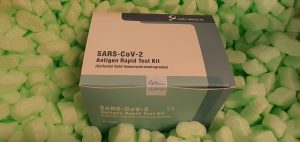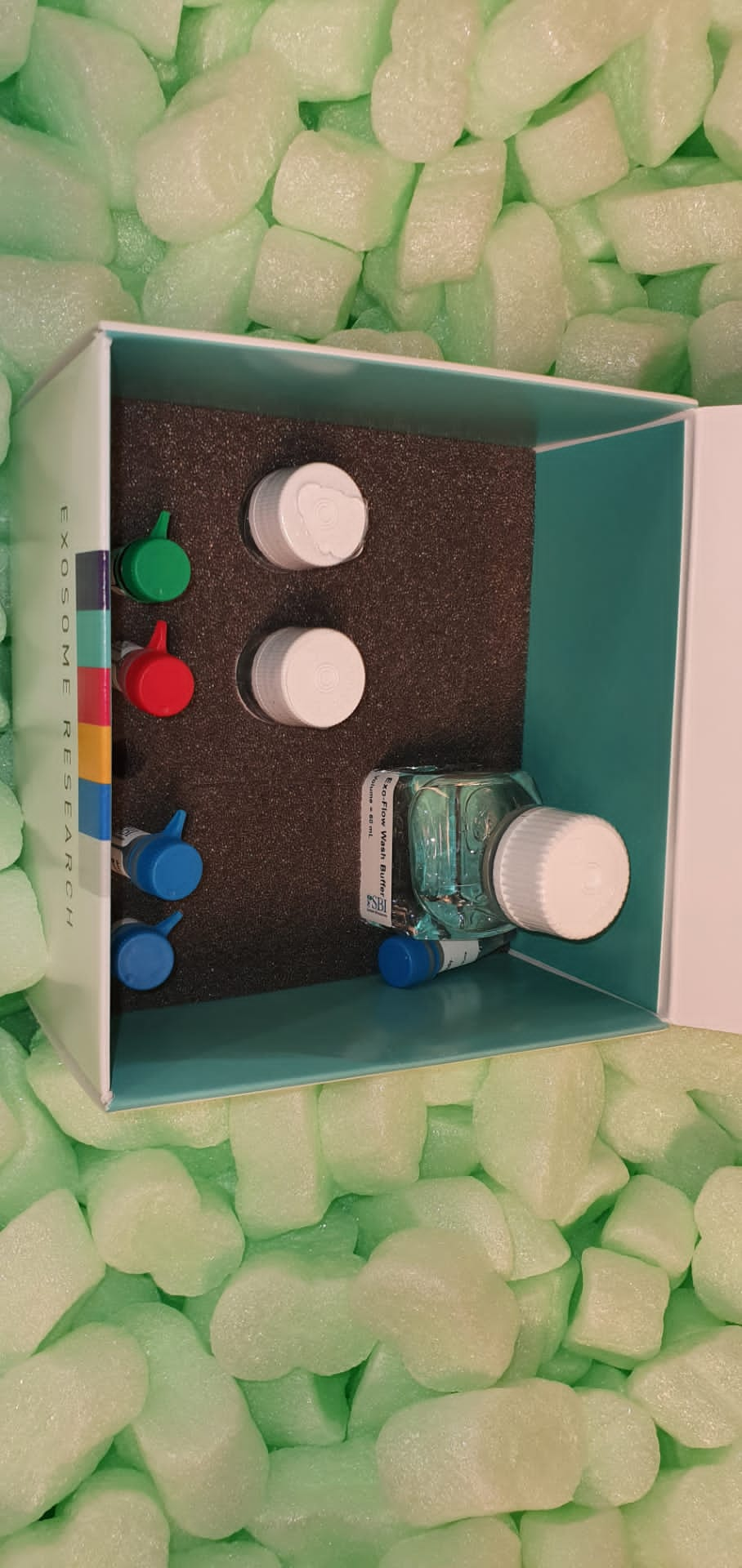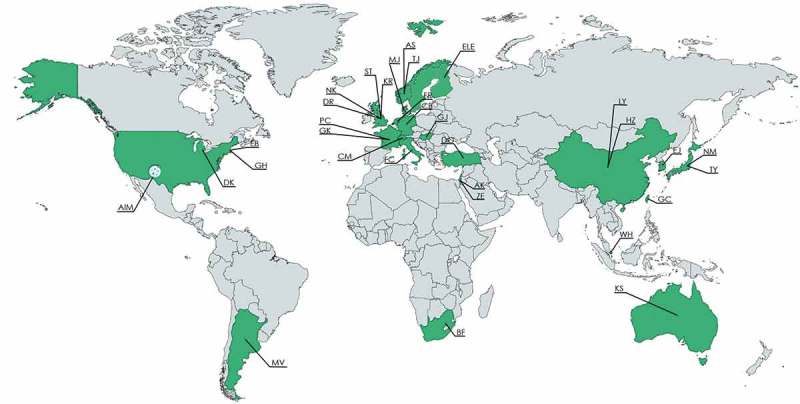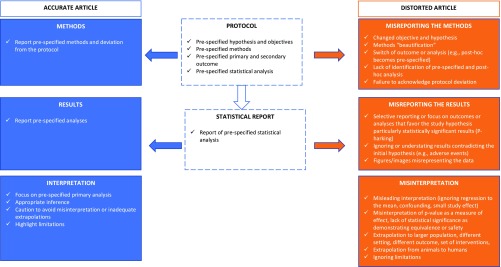Highly sensitive second-antibody enzyme immunoassay for determination of estradiol-17beta concentration in blood plasma of the mithun (Bos frontalis).
Highly sensitive second-antibody enzyme immunoassay for determination of estradiol-17beta concentration in blood plasma of the mithun (Bos frontalis).
By Owen Turner
May 12, 2021
array, Assay, Autophagy, Inflammation, and Metabolism (AIM) Center of Biomedical Research Excellence: supporting the next generation of autophagy researchers and fostering international collaborations., Goat, Misrepresentation and distortion of research in biomedical literature., My Blog, profiling, Pure, Purification, purified, Rabbit, Real-time, Recombinant, reverse, RIA, rnai, Translating innovation in biomedical research: Design and delivery of a competency-based regulatory science course.
0 Comments
The goal of the current research was to develop and validate a easy, sensitive, fast and financial enzyme immunoassay (EIA) for estradiol-17beta (E2) in mithun (Bos frontalis) plasma on microtiter plates utilizing a second-antibody coating method and hormone-horseradish peroxidase as a label. For the assay, the wells of microtiter plates had been coated with affinity-purified goat anti-rabbit IgG that binds the hormone-specific antibody. One milliliter of mithun plasma was extracted utilizing benzene and 50 microl of 300 microl quantity reconstituted with assay buffer was run in the assay together with requirements starting from 0.10-100 pg/properly ready in assay buffer.
The intra- and inter-assay coefficients of variation had been beneath 10%, and the extraction effectivity was >93%. Linearity of restoration of the added hormone concentrations was recorded. The assay developed was additional validated biologically by estimating the hormone concentrations in six feminine and 5 male mithun calves, 12 cyclic mithuns for the whole reproductive cycle, and 4 pregnant mithun cows. The EIA developed can estimate low concentrations of E2 (2.2-5.2 pg/ml) in rising calves in addition to very excessive concentrations of the hormone throughout being pregnant (E2=85.6-143.5 pg/ml).
Apart from being non-radioactive, the assay developed has a number of benefits over standard radioimmunoassays: it’s extra sensitive, much less labor intensive, less complicated to carry out, and fewer time consuming. In conclusion, the EIA process described herein is sufficiently dependable, financial, secure, fast and sensitive to estimate the hormone in any respect physiological ranges in bovine plasma. The sensitivity of the assay was 0.72 pg/ml.
Use of biotinylated 17beta-estradiol in enzyme-immunoassay improvement: spacer size and chemical construction of the bridge are the predominant determinants in simultaneous streptavidin-antibody binding.
17beta-estradiol (E2) concentrations are in the low pg/ml vary in plasma. To develop a sensitive enzyme immunoassay (EIA) for E2-determination a extremely particular antibody raised towards a 6-carboxymethyl (CMO)-E2-bovine serum albumine conjugate was used. Based on 6-CMO-E2 and 6-amino-E2, 4 biotinylated tracers with two completely different spacer lengths between E2 and biotin had been synthesized utilizing biotinylation reagents in one step reactions. All amino-based tracers had been unsuitable for assay improvement as a result of the antibody binding was too weak in comparison with the analyte E2.
For 6-CMO-based tracers the simultaneous binding of the tracer to the antibody and streptavidin appears to be the figuring out step in the process relying on incubation temperature and spacer lengths. While a brief spacer of 9 carbon atoms was prone to room temperature, an extended spacer of 16 carbon atoms confirmed almost the similar outcomes for incubation at four levels C or at room temperature. The absolute detection restrict of this method was 0.63 pg/properly.
For pattern clean-up, porcine plasma was solvent-extracted and relying on the preliminary plasma quantity additional purified by solvent partition. Determination of reproducibility resulted in intraassay coefficients of variation of 13% and 5.3% for samples with E2-levels of 15 pg/ml and 236 pg/ml, respectively. Measurement of E2-spiked blood plasma revealed recoveries of 83% as much as 100% for E2 concentrations between 50 pg/ml and 1000 pg/ml. Only for the lowest concentration (20 pg/ml) a restoration of 58% was noticed. Correlation of the EIA with a longtime radio immunoassay resulted in r=0.991 utilizing the similar antibody.
Modulating the binding properties of an anti-17beta-estradiol antibody by systematic mutation mixtures.
The anti-17beta-estradiol antibody 57-2 has been a topic for a number of protein engineering research which have produced a quantity of mutants with improved binding properties. Here, we generated a set of 16 antibody 57-2 variants by systematically combining mutations beforehand recognized from phage display-derived improved antibody mutants. These mutations included three level mutations in the variable area of the light-chain and a heavy-chain variant containing a four-residue random insertion in complementarity figuring out area CDR-H2.
The antibody variants had been expressed as Fab fragments, and so they had been characterised for affinity towards estradiol, for cross-reactivity towards three associated steroids, and for dissociation charge of the Fab/estradiol advanced through the use of time-resolved fluorescence based mostly immunoassays. The double-mutant cycle methodology was used to handle the cooperativity results between the mutations. The experimental knowledge had been correlated with structural data through the use of molecular modeling and visible evaluation of the beforehand solved antibody 57-2 crystal buildings.
These analyses offered details about the steroid-binding mode of the antibody, the potential mechanisms of particular person mutations, and their mutual interactions. Furthermore, a number of combinatorial mutants with improved affinity and specificity had been obtained. The capability of one of these mutants to detect estradiol concentrations at a clinically related vary was proved by establishing a time-resolved fluorescence based mostly immunoassay.

Functional characterization of an anti-estradiol antibody by site-directed mutagenesis and molecular modelling: modulation of binding properties and distinguished function of the V(L) area in estradiol recognition.
The high-affinity monoclonal anti-estradiol antibody 9D3 presents a specificity defect in direction of estradiol-3-sulphate and 3-glucuronide conjugates incompatible with use in direct immunoassays. The corresponding single-chain variable fragment (scFv), cloned and produced in E. coli, exhibited a 10-fold decrease affinity for estradiol (Okay(a)=1.2 x 10(9) M (-1)) and a barely elevated specificity defect for the 3-position. Site-directed mutagenesis revealed essential residues concerned in estradiol recognition and produced mutants exhibiting as much as a 3-fold improve of the binding affinity for estradiol and as much as a 2-fold lower of the cross-reactivity with estradiol-3-sulphate.
A comparative mannequin of the antibody 9D3-estradiol advanced was constructed in which the estradiol D-ring is buried into the binding pocket whereas the 3-, 6- and 7-positions are solvent uncovered, agreeing with the lack of specificity for these three positions. Two potential various orientations of the A-ring, one near CDR H3 and L2 loops, and the different one near CDR H2 and L3 loops, have been thought-about for the docking of estradiol, none of which could possibly be unambiguously privileged considering knowledge from cross-reactivity measurements, photolabelling and mutagenesis research. For each orientations, estradiol is stabilized by hydrogen bonding of the 17beta-OH group with TyrL36
[Linking template=”default” type=”products” search=”Thiomalic Acid purified” header=”1″ limit=”145″ start=”3″ showCatalogNumber=”true” showSize=”true” showSupplier=”true” showPrice=”true” showDescription=”true” showAdditionalInformation=”true” showImage=”true” showSchemaMarkup=”true” imageWidth=”” imageHeight=””]
His89 and GlnH35 in the first case, or TyrL36, solely, in the second case and by van der Waals contacts from TyrL91 with alpha- or beta-face of estradiol, respectively, and from ValH95 and GlyH97 with the reverse face. To elucidate the molecular foundation of antibody 9D3 specificity, as in contrast with that of one other anti-estradiol antibody 15H11, single variable domains (V(H) and V(L)) and scFv hybrids have been constructed. The binding exercise of V(L)9D3 in addition to the specificity of the V(L)9D3/V(H)15H11 hybrid, each much like antibody 9D3, revealed a distinguished function of V(L) in estradiol recognition. These findings set up premises for antibody engineering to cut back cross-reactivity, particularly with estradiol-3-conjugates.
Tags:elisa kits china, elisa kits companies, elisa kits definition, elisa kits distributor all over the world, elisa kits distributor list, elisa kits for chemokines, elisa kits for covid 19, elisa kits manufacturer, elisa kits manufacturer in india, elisa kits nigeria, elisa kits r&d systems, elisa kits thermo fisher, enzymes are quizlet, enzymes definition, enzymes for adhesions, enzymes for cats, enzymes for digestion, enzymes for digestion of lipids, enzymes for dogs, enzymes for dogs joints, enzymes for drain, enzymes for drain pipes, enzymes for fat, enzymes for gluten, enzymes for heart, enzymes for mucus, enzymes in pcr, enzymes in spanish, enzymes in the body, enzymes ingredient, enzymes liver, enzymes medicine, enzymes ph level, enzymes test, enzymes testing, enzymes work by, equipment rental, equipment rentals near me, equipment share, equipment shunned by fly fishers, equipment shunned by fly fishers crossword, equipment synonym, equipment trader, equipments cleary, equipments data, equipments fds, equipments gym, equipments mtg, equipments needed in building an aquarium, equipmentshare careers, equipmentshare ceo, equipmentshare controller, equipmentshare hr, equipmentshare kc, equipmentshare us, equipmentshare website
Related Posts

Development of anti-immunocomplex specific antibodies and non-competitive time-resolved fluorescence immunoassay for the detection of estradiol.

Autophagy, Inflammation, and Metabolism (AIM) Center of Biomedical Research Excellence: supporting the next generation of autophagy researchers and fostering international collaborations.

